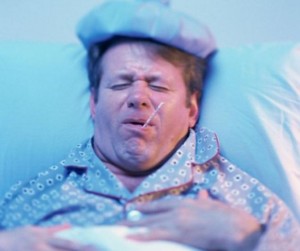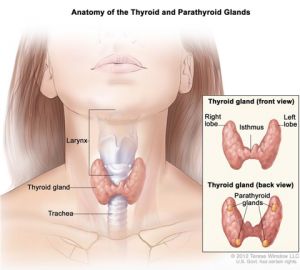Animal assisted therapy is becoming an increasing trend to help heal people. Trained dogs visiting hospitals, nursing homes, and various other places, what’s not to love? The Children’s Hospital of Philadelphia, along with many other children’s hospitals, provides a program in which trained dogs will come and visit sick children. From being a patient there I am familiar with the concept of therapy dogs and recognize their impact on me. Therapy dog owners can go around to different rooms and inquire whether or not the child is up for a dog visiting. Some dogs even have their own information card for the patients to look at and collect.
There are many reasons that the hospital supports this. First off, it provides light hearted fun in an otherwise very stressful environment. Having a dog to pet, or lick your hand can easily relax the child and put them in a happier state of mind. Those being visited are currently away from home and typically in a scary and uncertain position. There is a high correlation between the visit of a therapy dog and a child’s stress level going down. Secondly, a therapy dog visit is usually a complete surprise, so, it has an even greater effect on the child’s instant happiness boost. There is also a strong correlation between a child’s happiness boost and a visit from a therapy dog. Also, in general, happier patients tend to have less painful experiences. Many patients who have dogs at home will be even more comforted by the sight and touch of a friendly dog. 
Now, they don’t just let any dog stroll up and go into children’s rooms. There are lots of restrictions and stipulations. All dogs and owners must be evaluated and trained properly. There are a few national and even international dog therapy organizations. Many hospitals require the dog to be registered at a branch of one of these organizations. For example, for Therapy Dogs International the dog must be registered with them and must also pass a specific evaluation to ensure that she reaches their standards. Along with this evaluation, many hospitals require an evaluation of their own. It may depend on what state they are in or the hospital’s individual policies. Along with the certifications for the service animal, these evaluations may include tests such as an FBI finger print scan, a child abuse background check, and other research into the owner’s background. As a pet therapy owner, you must be able to commit to a few hours each month. Those times depend on the location that they are visiting.
So do animals, and specifically, therapy dogs really work? What is the psychology behind it? Studies have shown that the presence of a therapy dog calms a person down quite a bit. For example, a person’s heart rate and breathing goes down. Overall, it relieves stress. A recent study showed that stress hormones in a person’s blood were reduced immensely while petting a nice dog, and specifically one that the person knows personally (Corner). The reason that dogs are still visiting children’s hospitals is because people have noticed the effect on the patients. It is certainly not having a negative effect, only positive for those who choose to participate. One could say there is a meta-analysis to prove this because of the combination of all the positive results for this topic. In this case the x variable would be the therapy dogs and the y variable would be the child’s happiness. The hypothesis that therapy dogs increase patient’s happiness has been proven time and time again. This link discusses a study done in an Italy children’s hospital where therapy dogs were introduced. They found that the children had good interactions with the dogs and that they seemed to be more at ease in their current environment (Caprilli).
According to National Geographic dogs and humans have always had a rather special bond which is why dogs are so comforting to humans. Additionally, dogs are rare animals who do not possess an inherent fear of humans. This article also explains how after the Sandy Hook shooting, some children finally opened up either to a dog, or with the comfort of a dog (Fiegl). Another interesting point brought up is the idea that dogs notice our emotions and recognize how to work off of them. Dogs aren’t the only animals that are doing great things for people’s mental state. Here is an article explaining different ways that other therapy animals are being used and helping people. This seems to be considered a soft endpoint because it seems to help influence patient’s happiness, which, in turn, could lift the patients spirits which may aid to a quicker recovery process. Although there is a strong correlation between the two, it is not completely definite. All in all, it is true that therapy dogs can help children lower their stress during hospital stays.
Bibliography:
Caprilli, Simona, and Andrea Messeri. “Animal-Assisted Activity at A. Meyer Children’s Hospital: A Pilot Study.” Animal-Assisted Activity at A. Meyer Children’s Hospital: A Pilot Study. N.p., n.d. Web. 20 Oct. 2016.
Children’s, Nationwide. “Dog Visit Program.” Nationwide Children’s. N.p., n.d. Web.
Coren, Stanley. “Health and Psychological Benefits of Bonding with a Pet Dog.” Psychology Today. N.p., n.d. Web. 20 Oct. 2016.
Fiegl, Amanda. “The Healing Power of Dogs.” National Geographic. National Geographic Society, n.d. Web. 20 Oct. 2016.
Hospital of America, Children’s. “Gerald B. Shreiber Pet Therapy Program.” Children’s Hospital of America. N.p., n.d. Web.
PsychToday. “Does Animal-Assisted Therapy Really Work?” Psychology Today. N.p., n.d. Web. 20 Oct. 2016.
Rodriguez, Kerri E. “Service Dogs and PTSD – OHAIRE.” – College of Veterinary Medicine. N.p., n.d. Web. 20 Oct. 2016.
“Therapy Dogs International.” Therapy Dogs International. N.p., n.d. Web. 20 Oct. 2016.
Picture:
http://www.chop.edu/sites/default/files/styles/16_9_small/public/shreiber-pet-therapy-canonical.jpg?itok=rGGgEV_Y



 One of the biggest jobs that the
One of the biggest jobs that the 
 In addition to the gross factor, there are many other reasons why picking your nose is something you should quit now. It is actually quite a major health concern which, when you think about it, makes a lot of sense. First, by picking your nose, you can actually cause a nose bleed to start. There are many arteries that are located in the nose. When you scratch those arteries it can cause intense bleeding and start a nose bleed. This is a very common thing that happens to younger kids.
In addition to the gross factor, there are many other reasons why picking your nose is something you should quit now. It is actually quite a major health concern which, when you think about it, makes a lot of sense. First, by picking your nose, you can actually cause a nose bleed to start. There are many arteries that are located in the nose. When you scratch those arteries it can cause intense bleeding and start a nose bleed. This is a very common thing that happens to younger kids.


 The phase that dreaming occurs in is called the REM phase. Although dreams may occur in non-REM phases, the dreams you remember most often occur in the REM phase. This is due to the fact that the REM phase is the sleeping phase that occurs closest to one waking up. If woken up during a REM phase, you will most likely completely remember what you were dreaming about. Interestingly enough, dreams affect the way one acts during the day. If you had a nightmare the night before, then that day you may not be so happy and have a very moody attitude (Sandford).
The phase that dreaming occurs in is called the REM phase. Although dreams may occur in non-REM phases, the dreams you remember most often occur in the REM phase. This is due to the fact that the REM phase is the sleeping phase that occurs closest to one waking up. If woken up during a REM phase, you will most likely completely remember what you were dreaming about. Interestingly enough, dreams affect the way one acts during the day. If you had a nightmare the night before, then that day you may not be so happy and have a very moody attitude (Sandford). One’s thyroid is located in the front and bottom of the neck. It is often described as looking like a butterfly. The thyroid controls many aspects of your body which include things such as regulating one’s breathing and heart rate, body weight and temperature, mood, anxiety and much more (Brady). The thyroid gland produces two hormones, Triiodothyronine (or T3) and Thyoxine (or T4). Keeping these hormones at a steady level is key for the body to properly function. If they are not at a normal level, this can result in hypoactive or hyperactive thyroids (Brady).
One’s thyroid is located in the front and bottom of the neck. It is often described as looking like a butterfly. The thyroid controls many aspects of your body which include things such as regulating one’s breathing and heart rate, body weight and temperature, mood, anxiety and much more (Brady). The thyroid gland produces two hormones, Triiodothyronine (or T3) and Thyoxine (or T4). Keeping these hormones at a steady level is key for the body to properly function. If they are not at a normal level, this can result in hypoactive or hyperactive thyroids (Brady). Thyroid cancer is a more uncommon type of cancer and is usually easily treatable if found early. There is not a known cause of thyroid cancer, so as of now, there is no real way to prevent it. Often times they have to take out part or the entire thyroid if there are malignant cells growing on it. In my case, they had to take out my whole thyroid gland.
Thyroid cancer is a more uncommon type of cancer and is usually easily treatable if found early. There is not a known cause of thyroid cancer, so as of now, there is no real way to prevent it. Often times they have to take out part or the entire thyroid if there are malignant cells growing on it. In my case, they had to take out my whole thyroid gland.